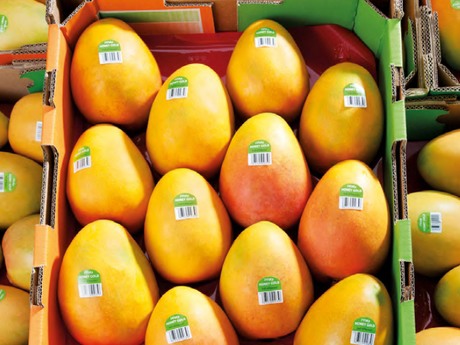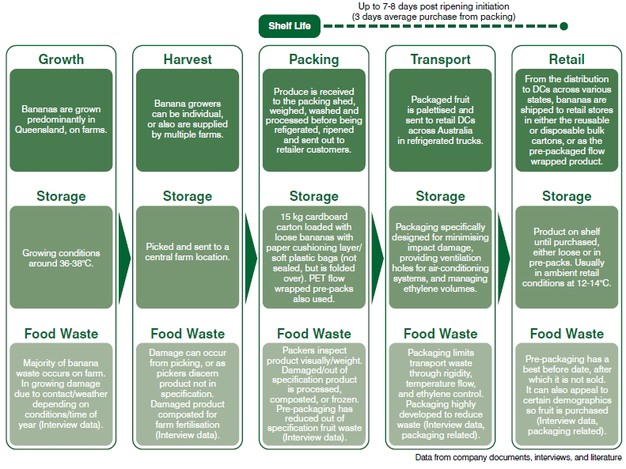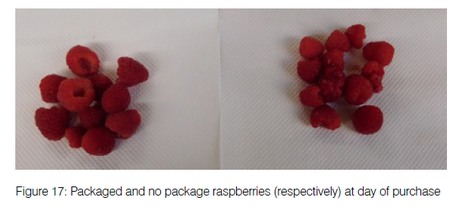A new report has highlighted the importance of striking a balance between packaging that reduces the environmental impact of food waste, compared to the environmental impacts of that packaging in the fresh produce industry.
The Australian Fresh Produce Alliance (AFPA) has released research by RMIT University on the role of packaging for Australian fresh produce. It found that product protection should be the primary goal of packaging, as food waste generally accounts for a larger proportion of the life-cycle environmental impacts of the food-packaging system.
"Key findings of this research were that packaging fresh produce does help to avoid and reduce food waste by protecting the integrity of the product in the supply chain, increasing product shelf life," AFPA CEO Michael Rogers said. "These findings are valuable because in Australia we are seeing large amounts of food waste at the same time as we are seeing an increase in the rates of obesity in our population. Being able to deliver fresh and nutritious fruit and vegetables to Australians is vital."

Photo Courtesy:AFPA report - The role of packaging for Australian fresh produce
Mr Rogers adds that waste is a complex issue that members of the Alliance have been contending with for some time and there is not a silver bullet solution. But it was clear that new packaging formats assisted in the establishment of new markets for previously out of specification produce.
"Packaging produce has afforded the opportunity to many members of the Alliance to be able to market previously unmarketable product," he said. "An example of this is lunch box bananas where the packaging has enabled smaller bananas, that would have previously been left in field, to be purchased and consumed by Australian families. In this example, the packaging protects and markets a product that if sold loose wouldn’t handle transport from Australia’s banana growing regions."
It is estimated that 7.3 million tonnes of food, valued at $20 billion, is lost or wasted in Australia every year, and the report also found that product protection is favoured over reduced packaging, which puts a product at risk of damage.
"From this research, a core message for consumers is that fresh produce packaging plays a key role in reducing food waste," Mr Rogers said. "Industry is working to address the interlocking issues of food waste, packaging and recycling. We have committed to reducing and removing unnecessary packaging and developing new packaging materials. We are also looking to better understand what happens to fruit, vegetables and their packaging in the home so we can better understand how product and packaging formats can prevent food waste."

Source: AFPA report: The role of packaging for Australian fresh produce
There are new packaging formats constantly entering the market, and some of these carry additional costs, however, the AFPA says there are more than just financial considerations being undertaken by fruit and vegetable businesses. The report found that visual information is often relied upon for determining the quality and perceived freshness of fresh produce, influencing the decision as to whether it should be eaten or thrown out.
"Companies are focused on selecting the correct product/packaging format that enables the effective transport and storage of fresh produce for Australian families," Mr Rogers said. "For example, berry growers have attempted to use a fibre punnet to transport and sell berries, however, a property of fibre is that it absorbs moisture and this significantly reduced the quality of the berries. What this highlights is that cost is not the key consideration for selecting a packaging option, it a balance of environmental impact (both of packaging and food waste), cost and function of packaging."

Source: AFPA report: The role of packaging for Australian fresh produce
Intelligent packaging is packaging that actively monitors the condition of product during transport and storage. It is one of many new opportunities to investigate for the industry when investigating how best to manage our supply chains. This report makes reference to this, with regards to selecting packaging that matches a product as a way to help in reducing food waste - a core reason to utilise packaging in fresh produce.
Another key consideration is ensuring that any new material has a full life cycle plan that industry can implement, realising the circular economy.
"There are a wide range of new packaging materials under development and companies are considering all options," Mr Rogers said. "We are committed to supporting the development of new packaging materials as part of the solution of a more environmentally sustainable supply chain. It doesn’t work if a new material is environmentally friendly in production but there is no infrastructure and system to collect it and recycle, reuse, or break it down."

Source: AFPA report: The role of packaging for Australian fresh produce
The Australian Fresh Produce Alliance has released a packaging commitment which outlines five key elements to minimise packaging waste:
1. Ensuring that the role of packaging is focused on providing consumers with freshly grown, healthy and nutritious food, and minimising food waste.
2. Implementing the agreement by state and federal Environment Ministers in April 2018 that ‘100 per cent of Australian packaging be recyclable, compostable or reusable by 2025 or earlier to cut down on the amount of waste we produce’.
a. More than 75% of Alliance members’ current retail packaging (by volume) is recyclable, compostable or reusable.
3. Removing any non-functional or surplus packaging by designing it for optimal efficiency to maintain product freshness and maximising the availability of nutritious food.
4. Reducing the amount of packaging through the broader supply chain, and working toward developing a circular economy for packaging (where current packaging is recycled into new packaging) including recycled content.
5. Working with industry, suppliers, recyclers, and retailers to deliver outcomes, and encouraging the development of environmentally sustainable packaging.
The full report is available at http://freshproduce.org.au/resources/
